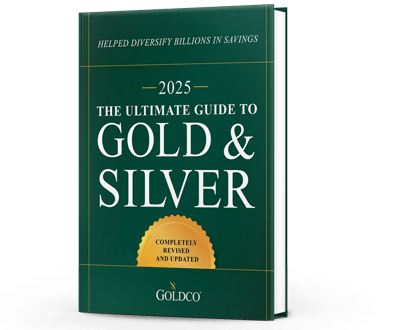Start A Silver IRA
More and more people today seem to be getting nervous about the future of the economy and their financial well-being With growing fear of a possible recession, continuing problematic inflation, and...
Precious Metals

Have you ever wondered if you could use your IRA funds to purchase alternative assets like gold?
Maybe you’re not happy with your current IRA asset choices. Maybe you just want to diversify your portfolio a little bit.
Or maybe you’re worried about loss during an upcoming recession and want to do something to help safeguard your assets.
No matter your reasons for wanting to buy gold, you can in fact buy gold using IRA assets. And it’s not that difficult to do.
So if you have retirement savings you’d like to keep safe, and you’ve been looking at buying gold recently, here’s how you can buy gold with IRA funds.
An IRA is an individual retirement account that offers tax-free gains to help Americans save money for retirement. The legislation establishing IRAs was passed in 1974, and since that time Americans have saved trillions of dollars in their IRA accounts.
While 401(k) accounts may be the dominant employer-sponsored retirement plan today, Americans actually hold more money today in IRAs than they do in 401(k) plans.
While the Traditional IRA is the type of IRA most people think of when they think of an IRA, there are four main types of IRA accounts with which you’ll need to be familiar.
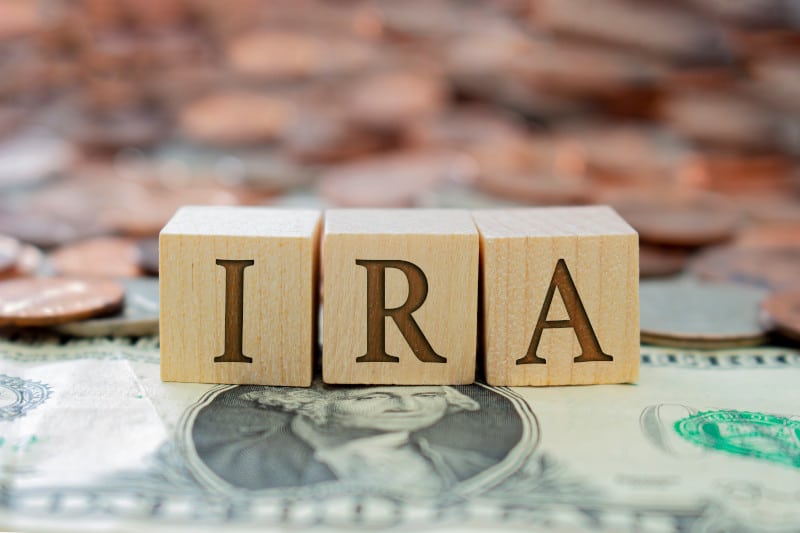
When most people talk generally about IRAs, they’re probably referring to a Traditional IRA. This is the default IRA type that most people will be setting up when they open up an IRA account for the first time.
Traditional IRAs are purchased with pre-tax dollars, and taxes are only paid on when you take a distribution. That means all of your capital gains and dividends can accrue tax-free as long as your IRA is open.
Traditional IRAs offer many benefits, and if your income is below certain thresholds, your IRA contributions may even be tax-deductible, which can reduce your current income tax liability.
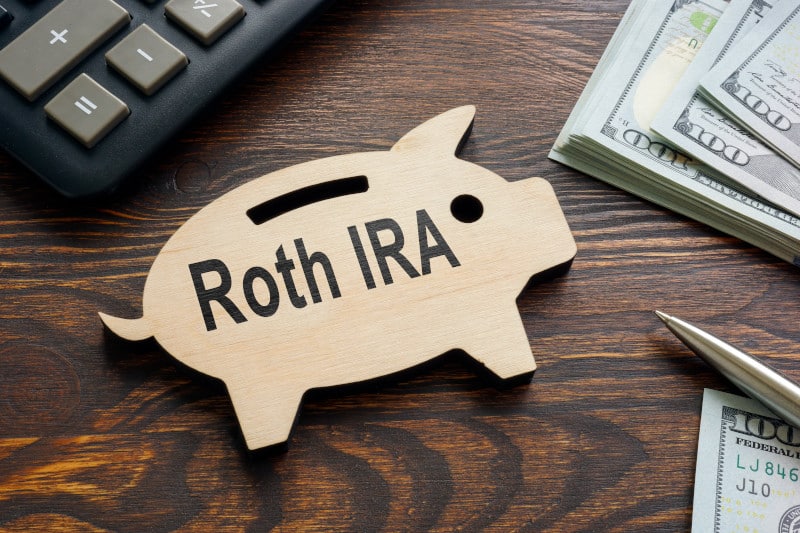
A Roth IRA is the next major type of IRA account, and it differs from the Traditional IRA in that it uses post-tax dollars. The assets in your Roth IRA also accrue tax-free, and qualified distributions are not subject to taxation.
Contributions to a Roth IRA are not tax-deductible, and there are income limits above which you won’t be able to make contributions to a Roth IRA. Additionally there are some Roth-specific rules such as the 5-year rule when it comes to distributions of earnings.
Roth IRAs are popular with those who think they may be in a higher tax bracket in retirement than they are today. And since Roth IRAs also don’t have required minimum distributions (RMDs) like Traditional IRAs do, they can be popular for those who want to keep their assets working for them well into retirement.

A Simplified Employee Pension Plan (SEP) IRA is a plan that allows employers to contribute to IRA accounts they set up for employees. Contributions are limited, and employees are not allowed to contribute to a SEP IRA.
Taking a distribution from a SEP IRA is similar to taking a contribution from a Traditional IRA in that it would be considered as income, and subject to a 10% penalty if taken before age 59½.
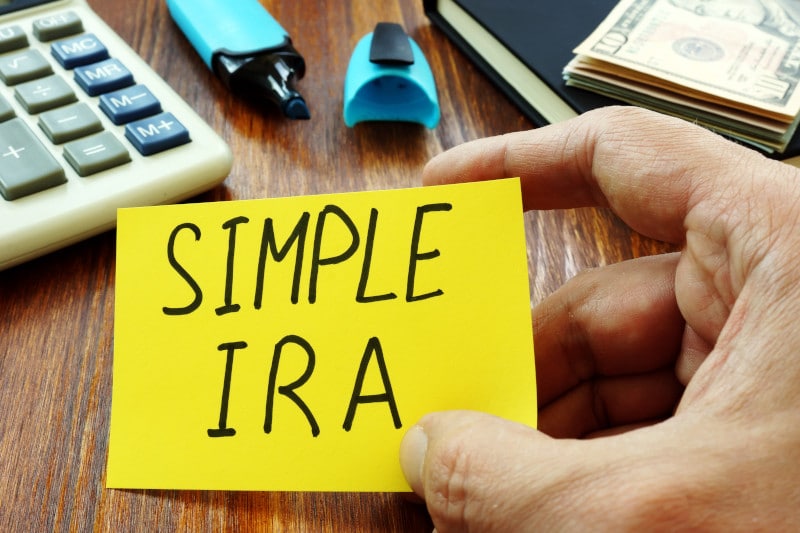
A Savings Incentive Match Plan for Employees (SIMPLE) IRA is intended for small employers to start retirement savings plans for their employees. Both employers and employees can make contributions to a SIMPLE IRA.
SIMPLE IRA distributions are subject to general Traditional IRA rules regarding distributions and withdrawals, although if a rollover is made from a SIMPLE IRA to another IRA, it can only be after two years of participation in the SIMPLE IRA.
In addition to these four major types of IRAs, there are further descriptors that can be attached to IRA accounts.
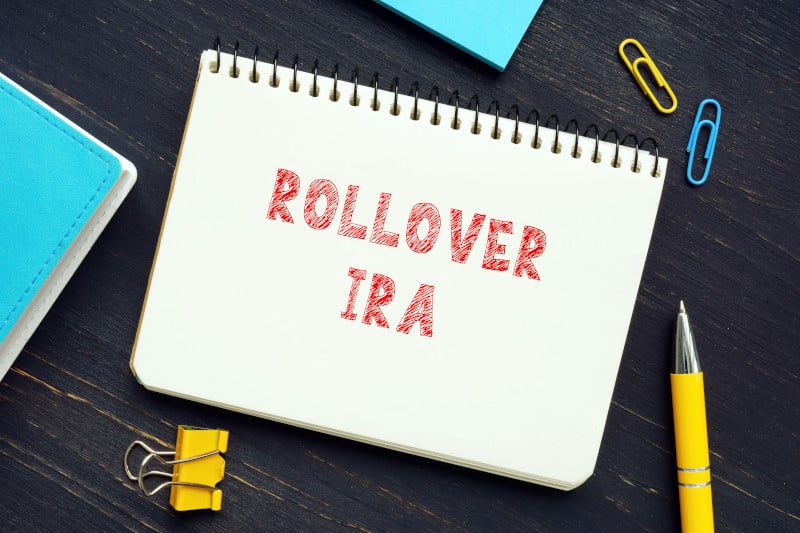
A rollover IRA is a term used to describe an IRA account that is funded with money rolled over from another IRA or retirement plan. You can fund a rollover IRA with money from a 401(k), TSP, 403(b), or 457 plan, or from a Traditional, Roth, SIMPLE, or SEP IRA.
Rollover IRAs will be either pre-tax (Traditional) or post-tax (Roth), and the type of rollover IRA you can start will be dependent on what kind of funds you are rolling over.
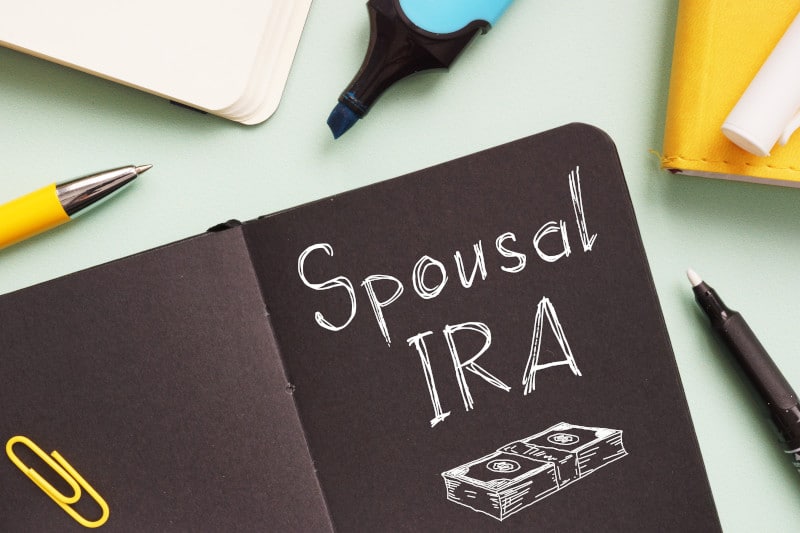
Normally you have to have earned income in order to contribute money to an IRA account. But for non-working spouses, there’s an exception, which is where spousal IRAs come into play.
A spousal IRA allows a working spouse to make contributions to an IRA in the name of a spouse who is either not working or who brings in very little income. That account is not a joint account, rather it is set up in the name of the non-working spouse.
This can allow married couples where one spouse is not working to double their annual IRA contributions. Whereas the current IRA contribution limit is $7,000 per year, opening a spousal IRA allows contributions to both the working spouse’s and the non-working spouse’s IRAs, for a combined total of $14,000 per year in contributions.
There are specific rules regarding how spousal contributions work, when those contributions are tax-deductible, etc., which is why it can be helpful to read up on the rules regarding spousal IRAs.

An inherited IRA, also known as a beneficiary IRA, refers to an IRA started by someone who has inherited IRA assets from someone else. In some cases when an IRA’s assets are left to you through inheritance, the funds can be rolled over into a new IRA in your name. In other cases, you must take distributions from the IRA.
This inherited IRA can be either a Traditional IRA or a Roth IRA, and the rules pertaining to this inherited IRA will vary depending on whether you’re a spouse or non-spouse of the original IRA owner, and whether the original IRA owner died in 2020 or before. If you inherit an IRA, you’ll want to look at some of the rules surrounding inherited IRAs, which can be very complicated.
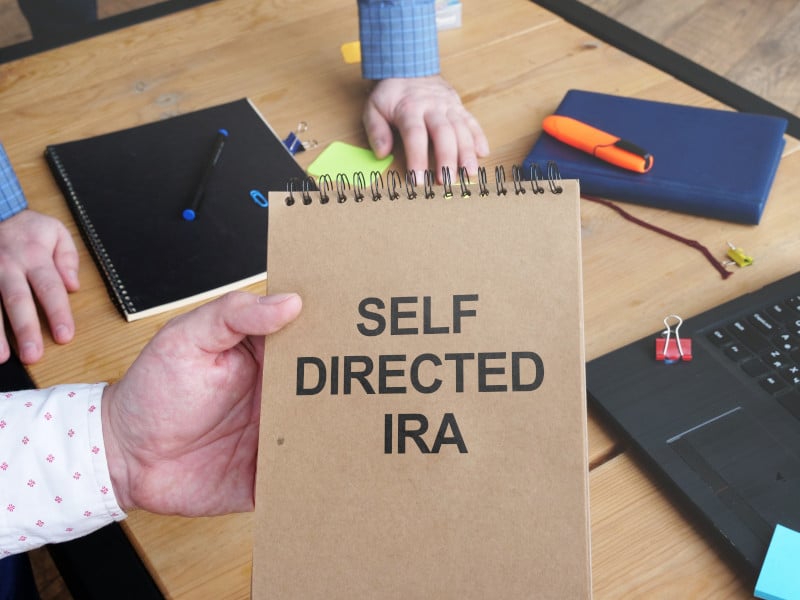
A self-directed IRA is an IRA in which the account holder directly manages the IRA. This allows account holders to hold a wider array of assets than they might otherwise be able to in conventional IRA accounts.
Because of these different types and sub-types of IRAs, there are numerous possible IRA configurations. For instance, you could set up a Roth IRA for yourself, as well as a spousal Roth IRA for your spouse.
Then you could roll over assets from your 401(k) account into a Traditional rollover IRA. Or you could roll over some of those assets into a Roth rollover IRA by performing a Roth conversion and paying taxes on that rollover.
And finally you could open a Traditional self-directed IRA to give yourself greater exposure to alternative assets Once you understand the different types of IRAs, how they work, and their relative advantages, you can tailor your assets to suit your needs.
Gold IRAs are a type of self-directed IRA. If you’ve ever opened an IRA at a traditional brokerage, you’ve probably noticed that gold isn’t one of your options.
That’s because most IRA custodians don’t offer self-directed IRAs. To open a self-directed IRA so that you can hold alternative assets like gold, you’ll need to find a custodian that specializes in offering self-directed IRAs and administering self-directed IRA assets.
Goldco works with established gold IRA custodians to administer our customers’ gold IRA assets, so that our customers don’t have to spend countless hours looking for a gold IRA custodian. And once you’ve selected a gold IRA custodian, you can start thinking about what kind of self-directed gold IRA you want.
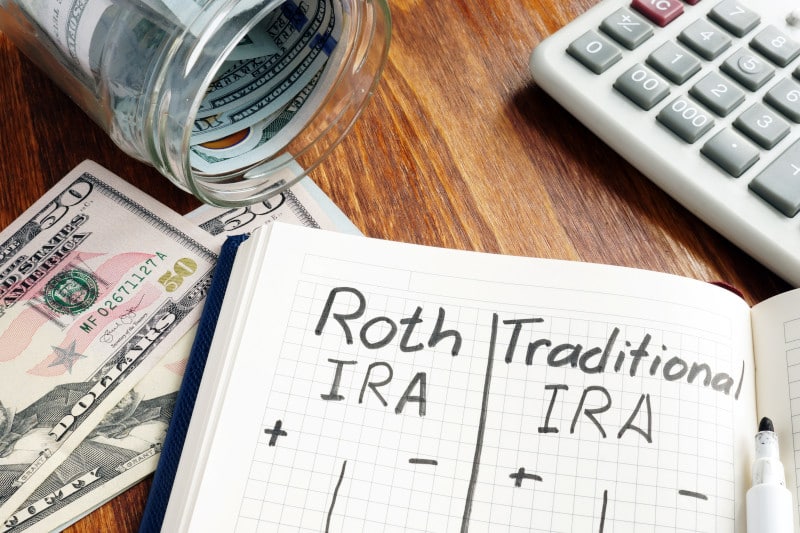
The first decision you’ll make is whether you want your gold IRA to be a Traditional IRA or a Roth IRA. Each one has its pros and cons, and which one you choose will depend on your particular set of circumstances.
The Traditional IRA can give you the benefit of tax deductibility and being able to purchase with pre-tax dollars. The downside is that you have to pay taxes when you take distributions in retirement.
The Roth IRA gives you the benefit of not having to pay taxes on distributions, and not having RMDs. But you pay taxes up front, and if your tax rate is higher now than in the future, that may not work to your favor.
If you decide to fund your gold IRA with a rollover, and it’s coming from a pre-tax account like a 401(k), you’ll probably choose a Traditional gold IRA. Or you could choose to do a Roth conversion, moving funds into a Roth gold IRA and paying taxes now so that you don’t have to pay taxes in the future.
If you roll over funds from a Roth 401(k), those can only be rolled into a Roth gold IRA, not into a Traditional gold IRA.
This of course plays into the next decision: how to fund your gold IRA. Most people choose to fund gold IRAs with rollovers, as rollovers aren’t subject to the low annual IRA contribution limits.
Whereas the contribution limit to IRAs is $7,000 per year ($8,000 if you’re over age 50), there is no limit to rollovers. So you could roll over $50,000, $100,000, or even millions of dollars if you have them.
Funding a gold IRA through rollovers can be beneficial because many costs associated with a gold IRA are fixed. You’ll pay account maintenance fees and storage fees that normally run between $200 and $300 a year.
For a gold IRA with $100,000 in assets, that’s a pretty small amount, about an 0.20-0.30% fee, which is about what many low fee mutual funds and ETFs would charge. But for a gold IRA with $7,000 in assets, those same fixed fees become 3-4%, which is significantly higher and can really eat into your gains.
Like all IRAs, gold IRAs are subject to rules and regulations. And while the same rules apply to gold IRAs as to all other IRAs, there are a few specific rules that you’ll want to keep in mind when starting a gold IRA.
Like all IRAs, gold IRAs are prohibited from self-dealing. What this means is that IRAs can’t engage in financial transactions that benefit you personally.
For a gold IRA, what this essentially means is that your gold IRA can’t purchase gold coins that you already own. So if you already own 100 Gold American Eagles, you can’t move those into a gold IRA, you would have to purchase new coins from a gold dealer.
If your self-directed IRA were to purchase real estate, it couldn’t purchase a house you already own, nor could it purchase a house that you and your family use. And you wouldn’t be able to use personal funds to keep up that property.

IRAs are also forbidden from owning collectibles, and gold IRAs are no exception. Among the items considered collectibles are coins and metals, with some important exceptions.
Gold, Silver, and Platinum American Eagle coins are not considered collectibles by IRS for IRA acquisition purposes, nor is any gold, silver, platinum, or palladium bullion that meets the fineness requirements for a futures contract.
What this means for a gold IRA is that any gold coins or gold bars with a fineness of .995 or higher (99.5% pure gold) are IRA-eligible. That means that popular gold coins like the South African Krugerrand or the French and Swiss 20 Franc gold coins are not IRA-eligible because their gold content is too low.
But there are numerous other gold coins you can purchase that are IRA-eligible. Goldco offers dozens of different IRA-eligible gold coins, and we work directly with mints around the world to source them so that we can offer our customers 100% authentic IRA-eligible gold coins.
Annual contributions to IRAs are limited to $7,000 per year, or $8,000 if you’re over age 50. This is across all IRA accounts, not per account, so if you have multiple IRA accounts, you can only contribute $7,000 total across all of them.
These contribution limits do not apply to rollovers, however, which allows you to fund an IRA by rolling over assets from an existing 401(k), 403(b), TSP, IRA, or similar account. By bypassing the annual contribution limits with a rollover, you can get your IRA fully funded and put it to work purchasing a wide variety of potential assets.
The rules on distributions are the same with a gold IRA as they are with any other IRA. For Traditional IRAs, distributions are taxable, and after age 73 you must take required minimum distributions (RMDs).
Qualified distributions from Roth IRA accounts are made tax-free. But there are little quirks like the 5-year rule for distributions of earnings that you need to be aware of when starting a Roth IRA.
If you fall afoul of distribution rules by not taking enough in RMDs from a Traditional IRA, you could owe penalties. And early distributions from Traditional IRAs (before age 59½) could hit you with taxes and penalties.

Working with Goldco to buy gold with your IRA funds can be done in three easy steps.
The first step is to sign a customer agreement stating that you agree to Goldco’s terms of doing business. Once you do this you can select a gold IRA custodian who will administer your gold IRA.
The second step is to fund your gold IRA. If your gold IRA is a Traditional IRA, you’re likely going to fund it with a rollover from our existing retirement account assets such as from a 401(k).
If you choose a Roth gold IRA, you could either do a Roth conversion when rolling over assets from a pre-tax retirement account, or roll over assets from an existing Roth IRA or Roth 401(k).
Once your gold IRA is funded, you can use those funds to buy gold coins and gold bars. Goldco offers dozens of different types of gold coins produced by mints around the world, with guaranteed authenticity.
If you’ve made it to this point, you may have more questions than you did when you started. And that’s okay.
At Goldco, we have over a decade of experience helping Americans from all walks of life benefit from owning gold, whether it’s through starting a gold IRA or making direct cash purchases of gold.
If you still have questions, we may have the answers. With over 6,000 5-star reviews from our satisfied customers, we work hard to make sure that our customers are satisfied with their gold buying experience.
So if you still have questions about how to buy gold with IRA funds, call Goldco today to learn more about the benefits of owning gold in an IRA.
